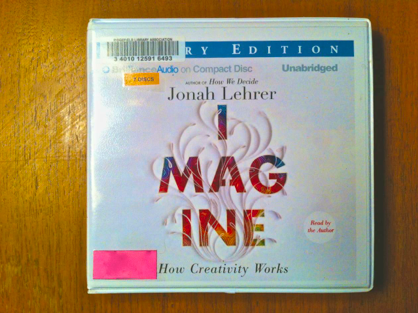After reading this book on the latest science regarding creativity, it is no miracle that I’m creative. I naturally tend toward what they call “right-brained” thinking. Additionally, I daydream, meditate, and make connections between disparate fields. I cultivate cross-pollination between subjects. I glean inspiration from everywhere, and my best ideas occur in the shower, or on a hike, or while painting. I am childlike and unconcerned about what people think of me. I experiment, ask questions, and persist on something until it works.
All these are characteristics that science is proving are components of creativity.
In this book I learned that Bob Dylan’s best song was written after he decided never to write another song. Like Archimedes in his bath, our best work happens when we’re not on the job. We also hear here how the bad glue found its venue as post-it notes by a member of the choir during a boring sermon.
I learned that Pixar’s success is largely based on the fact that Steve Jobs intentionally placed the building’s only bathrooms in the atrium, so the whole company would be forced to bump into one another more often, encouraging cross-pollination.
Scientists have proved that brainstorming doesn’t work, and that individuals writing out possible solutions separately, come up with vastly more ideas. However, criticism that focuses on solving problems, yields much more creative results.
We hear the story of how masking tape was discovered by a sand-paper salesman, and how the huge sum of money 3M spends on research and development evolved. I found it fascinating that corporations are now posting their unsolved problems on the internet along with corresponding reward money, and that these problems are almost always solved by people without sufficient background to be hired by the firm. Expertise needs to be unrelated to the issues at hand, since you can’t solve a problem on the same level as the problem.
Brain-scanning technology is telling scientists all sorts of things, and the range of research being done it both sweeping and amazingly detailed. I’m sure this work will continue, but for me who lives it, there were no surprises here.
So the “Just Do It” slogan just popped into the ad exec’s head after he was thinking about a courageous bandit’s execution? More is going on than just the brain. There is a spiritual connection that will never be able to be measured.
If you are interested in creativity, you may find this new book an interesting read. I give it four stars.
1 Comment
Pingbacks
-
[…] Book Review: Imagine: How Creativity Works […]








